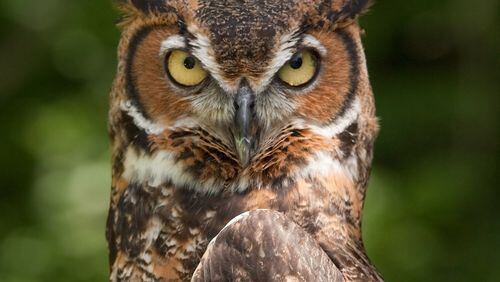For us, this is the time of year for holiday cheer, glad tidings and wishes for a Happy New Year.
For several of Georgia’s big, predatory birds — bald eagles, ospreys, big owls — it’s nesting time. They are remarkably able to cope with subfreezing temperatures and occasional ice and snow in the dead of winter, when they lay their eggs and hatch out babies — months before most other birds feel the urge to reproduce.
All of these big birds are believed to form breeding pairs that mate for life, often raising their babies in the same nests year after year. Even so, established pairs in each species engage in annual courtships to solidify their pair-bond relationships, perhaps like a renewal of vows.
The earliest nesters, bald eagles, began courting around October and renewing monogamous relationships by adding new sticks or branches to their huge, bulky nests, the largest nests of any bird in North America.
They began laying eggs (normally two per nest) in November. By Christmas Day, eggs in some nests will be close to hatching.
Georgia Department of Natural Resources biologists are hoping for another record-breaking nesting season for bald eagles, which once were on the Endangered Species List. Last season, biologists tallied 218 active eagle nest territories in Georgia, eclipsing the record of 210 set in 2015.
Ospreys, which are rarely seen far from water, also began breeding in November and building 0r refurbishing their large stick nests. A female osprey usually lays three eggs, which she incubates for 30-35 days.
Great horned owls began nesting in mid-December, and some of them may be sitting on eggs (two per nest) by mid-January — about the time when barred owls and barn owls will be kicking off their breeding seasons.
A reason the birds nest so early is their large size: It takes them longer to grow and mature than, say, a songbird. Also, the young birds must have time to learn from their elders how to hunt and master complex flying skills before being left to manage on their own.
IN THE SKY: From David Dundee, Tellus Science Museun astronomer: The moon will be first quarter on Tuesday. Mars and Jupiter, the only planets visible now, are low in the east just before sunrise.
About the Author






